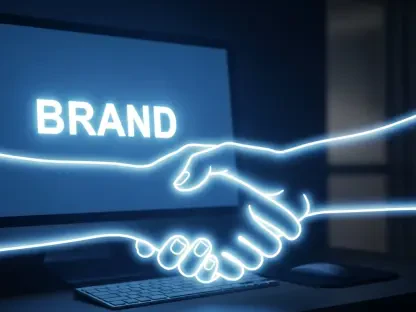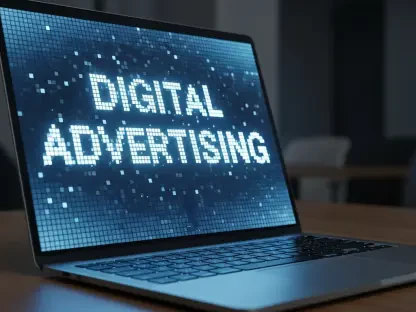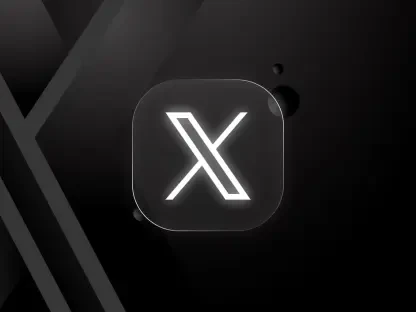Listen to the Article
Many digital marketers claim that they’re building a brand, but scrolling through their digital channels feels like a cemetery of the same old things: Templated content, recycled graphics, and bland buzzwords. While the intention is there, the approaches are outdated and void of lived and emotional experiences. Meanwhile, as the modern marketer knows, legacy strategies just aren’t cutting it anymore.
In today’s high-velocity digital world, the copy-and-paste approach ignores the audience’s demand for dynamic identity expressions that they can resonate with. Satiating this need opens the door to a world where trust is found in familiarity and indifference isn’t an option. In this article, you will discover the blind spots that are holding digital marketers back from progress—and how to course-correct by establishing distinctiveness, emotional clarity, and strategic tone.
It all starts by challenging some of the deeply misunderstood ideas in digital marketing today.
Consistency Does Not Equate Sameness
When it comes to brand consistency, most marketers keep it in factory settings: cookie-cutter tones, looks, and techniques across the board. The logic is understandable in that consistency builds recognition, but in practice, this approach leads to monotony and one-note content that disengages consumers. Authentic consistency isn’t stemmed from sameness because the human brain latches onto distinctiveness rooted in familiarity, not repetition. People remember the unexpected within the expected—the key difference between a brand that is unforgettable and one that is scrolled past.
Changing the branding game requires companies to operate on flexible systems colored by visual languages and tones that evolve with context. TikTok isn’t the same as LinkedIn, therefore, trying to communicate identically across different platforms kills consistency. Creating unique journeys is key, especially with the average social media user jumping between six or seven platforms monthly. People crave entertainment, and when content is delivered without differentiation, predictability often leads to dissatisfaction.
Adopting Multi-Channel Marketing
This doesn’t necessarily mean starting from scratch across every channel, but rather understanding how to repurpose content accordingly with a multichannel marketing approach.
Look at Duolingo’s viral April Fool’s Day prank to market its well-known language learning tool.
This campaign consisted of an over-the-top video promoting a non-existent parody aptly named “Duolingo on Ice” featuring two-time Emmy Award-winning producers, professionally trained dancers and skaters, as well as their unhinged and universally loved brand mascot, Duo the Owl.
Straight out of the gate, video content consistently performs better than other forms—making it the ideal format for a multichannel campaign. However, the train doesn’t stop there. What made this move so believable was how well Duolingo was able to adapt to each platform’s distinct conventions, while confidently maintaining its own identity.
Uploading their full video to YouTube played to the platform’s preference for longer content while cementing continued engagement. Posting a short-form version on TikTok and Instagram Reels catered to the demand for easily consumable content, amassing 2.2 million likes across both channels. Marketing on SeatGeek provided audiences with venue information and show dates, while the event details section was riddled with Duolingo’s irreverent and slightly dark humor.
This is the golden thread that weaves through the entirety of Duolingo’s campaign. By blending cheeky humor with cultural relevance and character-driven branding, this company has solidified a social presence that reinforces reliability and emphasizes entertainment value. All while crafting memorable moments that stick in their audience’s brains and differentiate Duolingo from competitors.
Tone as a Strategy, Not Style
Often viewed as a nice-to-have, quirky brand book addition, tone is one of the most underappreciated weapons in a digital marketer’s arsenal. However, in the digital world, this couldn’t be further from the truth—where tone is the brand and serves as an emotional glue binding all its encompassing aspects. It’s how stories are framed, solutions are communicated, and communities are connected.
Whether it’s an email subject line or a social media reply, each word carries a world of weight in influencing audiences’ brand perceptions. Where brand voice involves the specific diction and language used, tone defines the way in which those elements are conveyed and is adapted across platforms to feel more intuitive. By funneling brand values, personality, and intentions into how tone is constructed, companies can foster greater trust while establishing sustained audience engagement over time and bolster recognition.
Take a Look at Slack
Slack’s brand tone is a strong example of how staying true to brand identity plays an integral role in communicating digitally. From the get-go, Slack positions itself as “humans, speaking to humans” and backs it up with a conversational tone that reverberates throughout its marketing. With a friendlier and more casual approach to contrast its use in the workplace, this company infuses a sense of humor into audience engagement that feels like a meaningful conversation by speaking directly to users and their needs.
Digital Storytelling Isn’t What You Think
In digital marketing, storytelling has become an overused buzzword that is often misinterpreted. Many brands think that adopting this technique requires grand narrative arcs structured to star their products as protagonists in a movie-like manner. The truth is that storytelling isn’t cinematic; it’s systemic. Instead of relying on metaphors and mythologies, this approach emphasizes evoking emotions and context in a real-time setting, making brands more memorable and relatable.
However, audiences rarely embark on linear journeys, from connecting with brands on Instagram one day, searching for solutions on Google the next, and skimming through emails weeks later. Therefore, each touchpoint is an opportunity to share narratives, but requires a level of adaptability that allows for greater emotional connections. Think more in line with episodes rather than epics, creating a rhythm of smaller, connected stories that accumulate to produce something meaningful.
Creating compelling narratives that resonate across all platforms takes brands from a business to an experience that customers want to be involved in. When companies align with and empower stories that customers can insert themselves into, justifying purchasing decisions becomes a walk in the park.
Take a Look at Disneyland Paris
For example, as no stranger to storytelling, Disneyland Paris shows off its digital marketing skills with an endearing tale of a duckling taking flight to escape a storm and leaving behind a comic book featuring the beloved character, Donald Duck, as its hero. After enduring a turbulent night, the sun starts shining, and the duckling unexpectedly touches down at Disneyland Paris, where it is met by none other than Donald Duck himself. Through a diligent display of the anthropomorphism Disney has perfected, coupled with a heartstring-tugging moment, this company was able to capture the sense of wonderment audiences have come to expect and, in turn, feel more inclined to engage.
Conclusion
That’s the endgame: not visibility, not recognition, but resonance. In a world where platforms are oversaturated with content, brands that play it safe slip into the background, while companies crafting meaningful experiences are remembered, referenced, and revered. The question is, how do you get there?
The answer is by viewing brand building not as a campaign, but as a commitment. It starts by understanding why consistency isn’t about sameness, but coherence. Next, knowing that tone isn’t just for style, but serves as the emotional bridge between the audience. Finally, realizing that storytelling isn’t about the narrative itself, but the significance of the how, when, and where language is used to capture attention. It’s time to unleash your brand-building abilities—are you ready?









